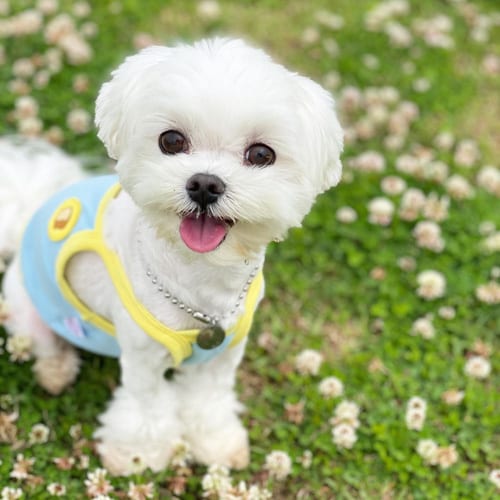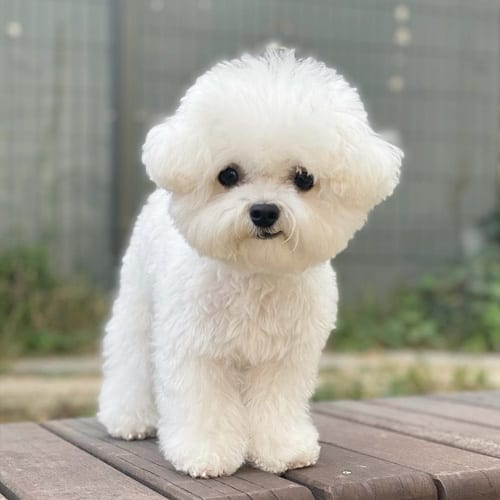Would you like to bring another type of dog at home? You may then want to consider a Maltese dog breed for you and your family.
This type of dog is one of the world’s friendly dog breeds. So, this may be compatible with your attitude and personality.
If you want to have this type of dog, you should know everything about this breed.
Of course, taking care of this dog breed needs extra focus and attention. That’s why you need to learn their personality, attitudes, behavior, and everything that would help you take care of them.
It’s not just you need to pick some specific types of dog, bring them home, and you will just let them stay in your home.
It is imperative to give them the proper care and passion they need since they are considered family members.
So, if you want to know more about the Maltese dog breed, then keep in touch with the succeeding discussions.
This article will provide you some information that will also answer your queries about this dog type.
What’s a Maltese?

Maltese is a type of dog in a toy group. Some people believe that it was originated from the Spitz type of dogs in South-Central Europe.
Maltese is a gentle, intelligent, and responsive type of dog. If you would like to have a companion in your life, then the Maltese dog breed is a perfect choice for you.
This may be suitable enough for your personality. This dog breed loves to be praised by its owner. They are very playful, active, and lovable.
This breed can be easily distinguished because of its long and straight white coat, which may seem to appear that it comes from the doggie hair salon.
What Does Maltese Look Like?
Maltese dog types have a look of the aristocrat and were preferred by some royalty over how many years.
They are typically playful, lovable, and energetic dogs who always look for some attention from their owners.
They have a straight and long white coat of hair, making it more noticeable than other dog types.
Maltese dog breeds have floppy ears and a compact type of body with sloping shoulders. They also have tufted tail which curls on their back.
Maltese breeds are properly proportioned with their slightly rounded head, brown eyes, and black nose.
How Big do Maltese Get?

This type of dog has no standard height. Most male Maltese breeds grow from 21-25 cm (8-10 inches).
On the other hand, female Maltese dogs tend to have smaller bone structure than those with males; so, they usually grow from 8-9 inches.
These measurements are from the floor to the top of their shoulder blades. Some Maltese dogs might sometimes be larger than the expected size, and they grow up to 11 inches or 27.94 cm.
How Much do Maltese Weigh?
According to the American Kennel Club (AKC), a full-grown Maltese dog breed’s standard weight is under 7 lbs. or 3.17 kg.
However, it is also impossible for an adult Maltese dog to be in the 1-pound range. And it is also rare for this type of dog to be in the 2lbs range.
Therefore, most of the Maltese dogs weigh about 3-7 lbs. when fully grown.
Do Maltese Dogs Shed?
Maltese dogs don’t have undercoats, and they only shed a little. But their hair coats require regular brushing to maintain their clean, straight hair.
Their long hair may also be tied on a topknot or maybe shortly trimmed to keep their eyes visible.
You can have some “puppy cut” for these dogs to have a beautiful appearance at any age.
How Often Should You Bathe a Maltese?

One of the best ways to properly take care of your Maltese dogs is to give them regular bathing.
So, whether you have an adult Maltese or a puppy, baths should be given to them once every three weeks. Although, it is not generally an arbitrary number.
The body of your dogs constantly produces body oils. These are needed to maintain the moisture of the coat and the skin.
These are also good for the protection of its natural layer. So, the timing of giving baths to them focuses on these body oils.
If you provide your pets with too many baths, then those oils may be removed.
Moreover, if baths are frequently given to them, their bodies can’t keep up. So, even with some bathing products, their skin may become dry.
Because of the absence of their body oils, they cannot protect the hair roots, affecting both their hairs’ growth and texture.
At some point, if you wait for too long between baths, their body oils will accumulate.
Once there’s a heavy layer on their skin, this may also block the skin pores and prevent natural air circulation.
Moreover, oils may slick to hair follicles that can cause lie flat coats and may even look greasy. Then, it will develop some bad smell on your pets.
Do Maltese Dogs Bark a Lot?
Maltese dogs bark a lot since they share a trait and behavior with the most toy-size type of dogs.
They also have a sensitive temperament, which makes them bark anytime. The barking of Maltese dogs is sometimes uncontrollable because of some reasons which may trigger their behaviors.
That’s why good and proper training for these Maltese dogs are needed. You should know their temperament and their overall behaviors so that you can eventually provide them the extra attention and care that they seek.
Is Maltese Hypoallergenic?

These Maltese dogs are hypoallergenic breeds that hardly drool and shed. If you want to have a dog in your house that can be considered your pets, then Maltese dogs are good for you.
You can have a low chance of getting some allergies from these dogs because of their hypoallergenic attribute.
One of the main reasons it is considered hypoallergenic is that their coats are different from other dog breeds. Maltese dog hairs are very close to those human hairs.
Aside from that reason, Maltese dogs don’t shed too much hair. So, it only means that a few or fewer hairs around your house may trigger an allergy to the owners.
Are Maltese Dogs Easy to Train?
Maltese is an intelligent type of dog; so, they are easy to train. However, it may also be difficult for you to break their persistent behavior.
So, you must never treat Maltese dogs harshly or even negatively correct them, even though it’s tough for you to let their stubborn behavior be changed into neutral ones.
Although the puppy Maltese may seem intimidating, always remember that they possess a fearless attitude. These dog types will never back down without any fight.
Maltese dogs see their teeth as their weapon to protect themselves. Suppose they may bark and bite you, especially if they are cornered.
These dogs’ natural response turns into defense mode once you unintentionally scare them.
So, the proper way of handling and training procedures is necessary to train them according to your expectations.
What are the Common Maltese Behavior Problems?

One of these Maltese dogs’ most common behavioral problems is their barking. They usually bark for several reasons.
You should know the meaning of their barks’ sound since they bark when they are scared, hungry, or seeking attention from you and others.
Even with the smallest detail in your house, these dogs keep on barking. A proper way of training is necessary for you to help your dogs with their behavior problems.
How Much do Maltese Cost?
While dog breeders with low standards will charge you as low as $600, for some pet-quality types of Maltese, you can expect that the price range will be from $2500 to $3000, depending on if the dog type is male or female.
Show-quality dogs or those with rights breeding often have higher prices from $3500 to $4000.
The price for these Maltese dogs varies from breeder to breeder. Some factors somehow affect its price, and these are the following:
- Medicine, feeding and sheltering
- Training and vet care
- Check-ups and medical examinations
- Surgery during the delivery of the puppies
Where to Buy/Adopt Maltese Dog?
Buying and adopting a Maltese dog could be your best option to have this type of dog for you and your family.
If you want to have these Maltese dogs for good, then it would be better to look for these types for any dog breeders in your locality.
However, make sure that the breeders you will consider are reputable to ensure the Maltese dogs are in good condition.
You can buy these dogs from them with the price range mentioned above. However, if you don’t want to spend a big amount of money from your pocket, then you may also opt to adopt these Maltese dogs.
Besides, these dogs can also be found in some rescue shelters where you can visit for adoption.
What are the Common Health Issues on Maltese Dogs?

Most of the health issues on Maltese dogs are genetic and environmental factors.
To properly take care of your dogs, it is important that they may encounter common health problems from puppyhood to adulthood.
Some of these common problems related to their health are the following:
- Breathing issues: Asthma is one of the common concerns that your dog may experience. Asthma should be given proper care and attention to control the symptoms. And since asthma and breathing difficulties are dangerous, it is crucial to visit your veterinarian for some check-ups and treatments if necessary.
- Colitis: This type of condition may occur when your dog’s colon becomes inflamed and swollen. Some causes of this condition may vary and sometimes unrelated. For example, colitis occurs because of stress and because of parasites. No matter the causes, symptoms like blood on the feces and diarrhea may be experienced. Maltese dogs may experience this health condition in a short period and may clear up on their own. But, when it becomes chronic, which lasts for a longer period, then a treatment should be necessary. Visit your vet as soon as possible for immediate attention.
- Dental problems: These dogs are prone to dental issues like gum disease or tooth loss at early ages. So, you should regularly brush your pets’ teeth to make sure that they will not suffer from periodontal disease.
- Eye irritation: This problem may be caused by your dogs’ long hair, which typically gets into their eyes.
- Portosystemic shunts: This is a type of inherited condition wherein the blood does not properly circulate through its liver. This condition may lead to some seizures and death. One of the options you can do to address this problem is surgery. However, this condition can sometimes be managed with proper medication and diet.
How Often to Brush a Maltese?
Maltese dogs with short haircuts must be given a regular brushing every three days.
Those Maltese dogs with moderate hairstyles must be brushed every two days, while those with long coat hairs need daily brushing so that their hair coats will be from matting and tangling.
How to Properly Groom Your Maltese Dogs?

Proper grooming for your Maltese dogs is necessary to maintain their good health.
For you to have some proper procedures in grooming your pets, then you may take the following things regularly:
- Hair Brushing: Brushing your pets’ coat always depends on its length. You may brush your dogs’ hair every three days or sometimes every day, especially if they have long hair.
- Combing: Combing must be used on the Maltese dog’s face since this area doesn’t have long coats. But for those long coats, this must be done in combination with brushing.
- Spritzing: This must be done alongside brushing.
- Bathing: Most of the Maltese dogs must be given a bath once every three weeks. However, there are some instances that frequent baths are needed during the special condition.
- Eye wipes, facial wipes–Your dogs’ face must be wiped at least 2-3 times a day.
- Coat wipe touch-ups: It is generally done once needed only to maintain the coat’s cleanliness in between baths.
- Nail trimming: This procedure is typically required every 5-6 weeks.
- Ear cleaning: Cleaning your dogs’ ears is needed every four weeks to remove its dirt.
- Teeth cleaning: Dog’s teeth must be scrubbed once a day to ensure that your Maltese dogs will not suffer from gum disease or any dental problems.
Do Maltese Dogs Need Exercise?
Maltese dogs also need regular exercise. So, you can have them with regular walks or let them play outside since they remain playful into old age.
Generally, they don’t need so many types of exercise because they are already active indoors.
Being playful as they run or roam around in your house is already considered a type of exercise. So, you don’t need extra effort to maintain their good shape.
However, it is advisable that you need to wait until your puppies turn eight months old for you to walk far with them.
It is because their bones are still in the growth and development. So, one thing that you can do while they are still puppies is to let them play at their own pace inside your fenced yard.
Before you give them a regimented program exercise, it is advisable to bring them to your veterinarian for another check-up.
What is the Proper Feeding for Your Maltese Dogs?

It would be advisable to measure the foods you will give to your Maltese dogs. It is recommended to give at least ¼ or ½ cup of good quality dry food per day.
This must be divided into two meals. Most experts recommend this highly recommended to keep your Maltese dogs from being obese.
You can put your hands on their body, fingers spread out onto their sides, and thumbs along their spine.
If you feel their ribs, then they are in good condition. However, if their ribs are buried beneath the fat layers, then it’s now time to give them a proper diet.
As much as possible, cut back the amounts of treats you give to them.
Some Maltese dogs are picky eaters and have digestive systems that are quite delicate.
Eating problems may occur once your pets have gum or teeth problems. If you see that your dogs have discomfort in eating, then it is advisable to take them to your veterinarian.





